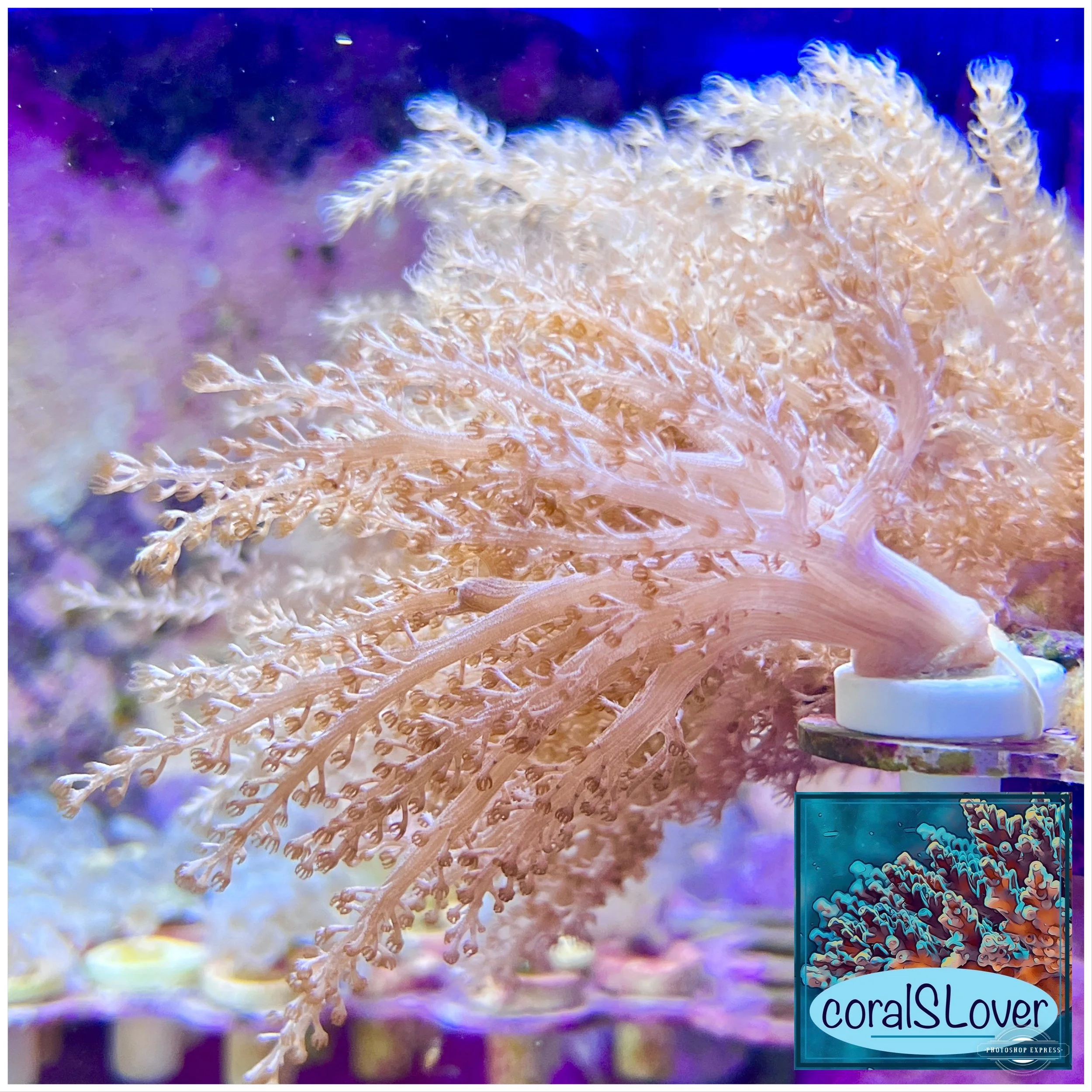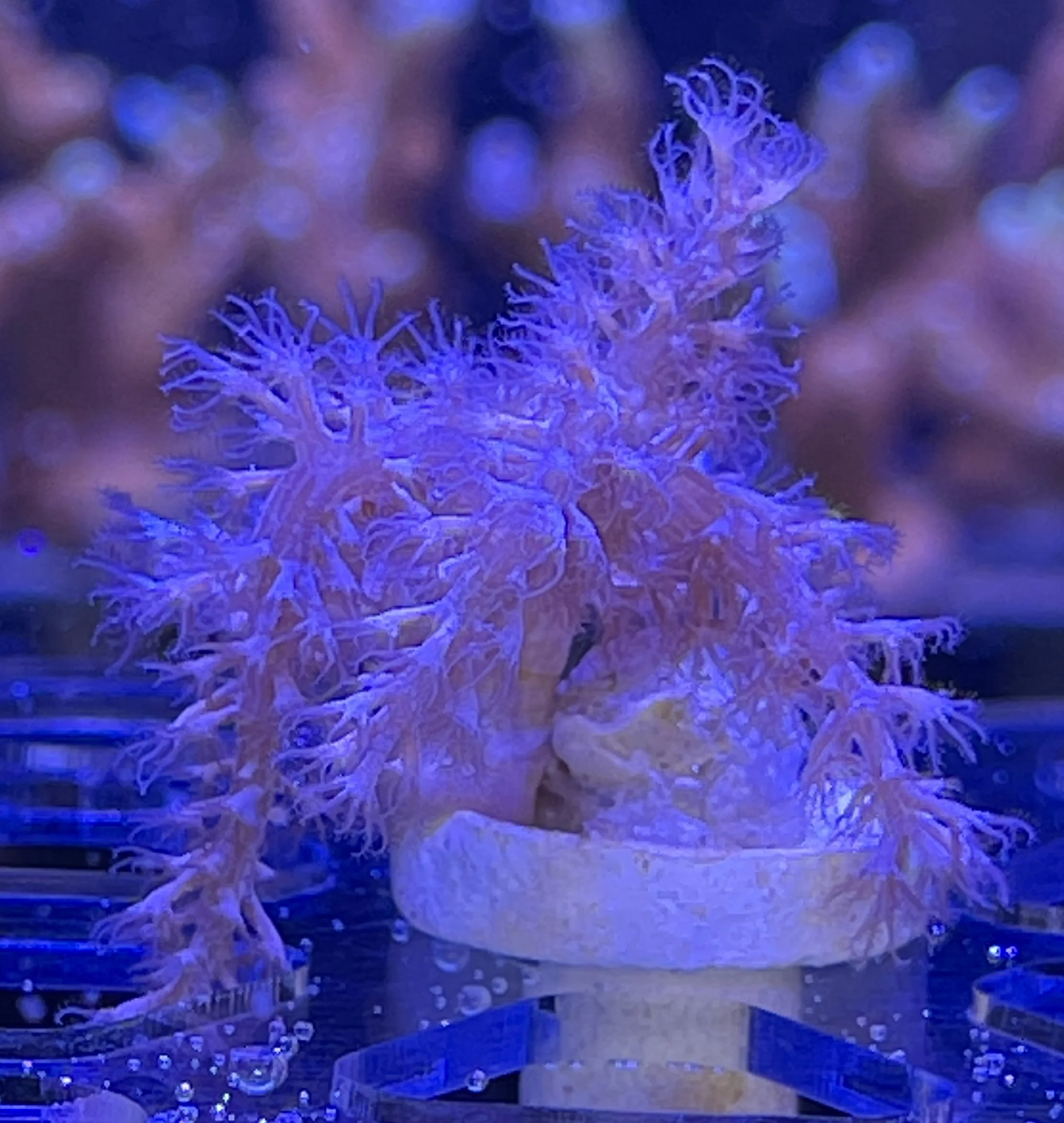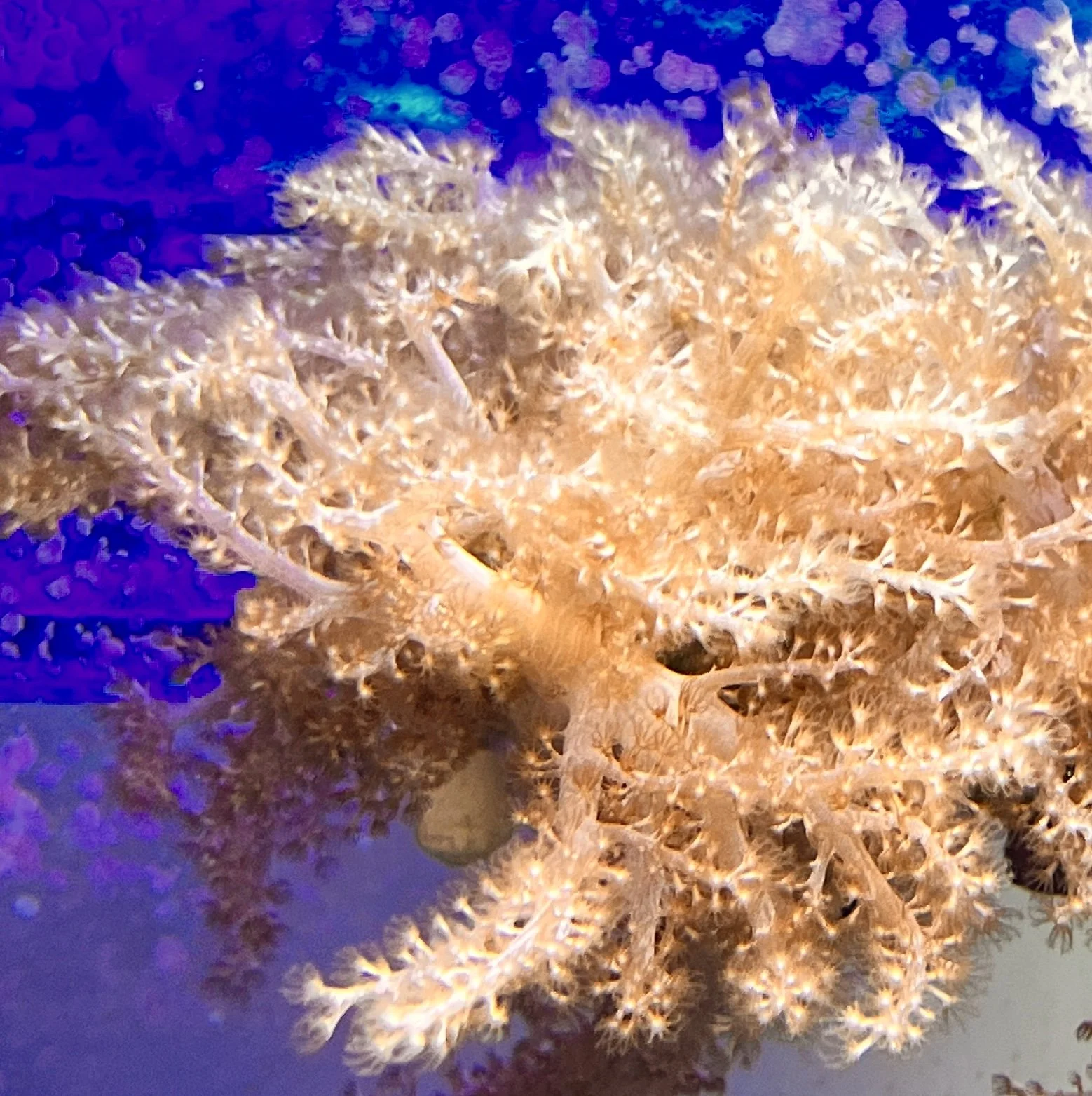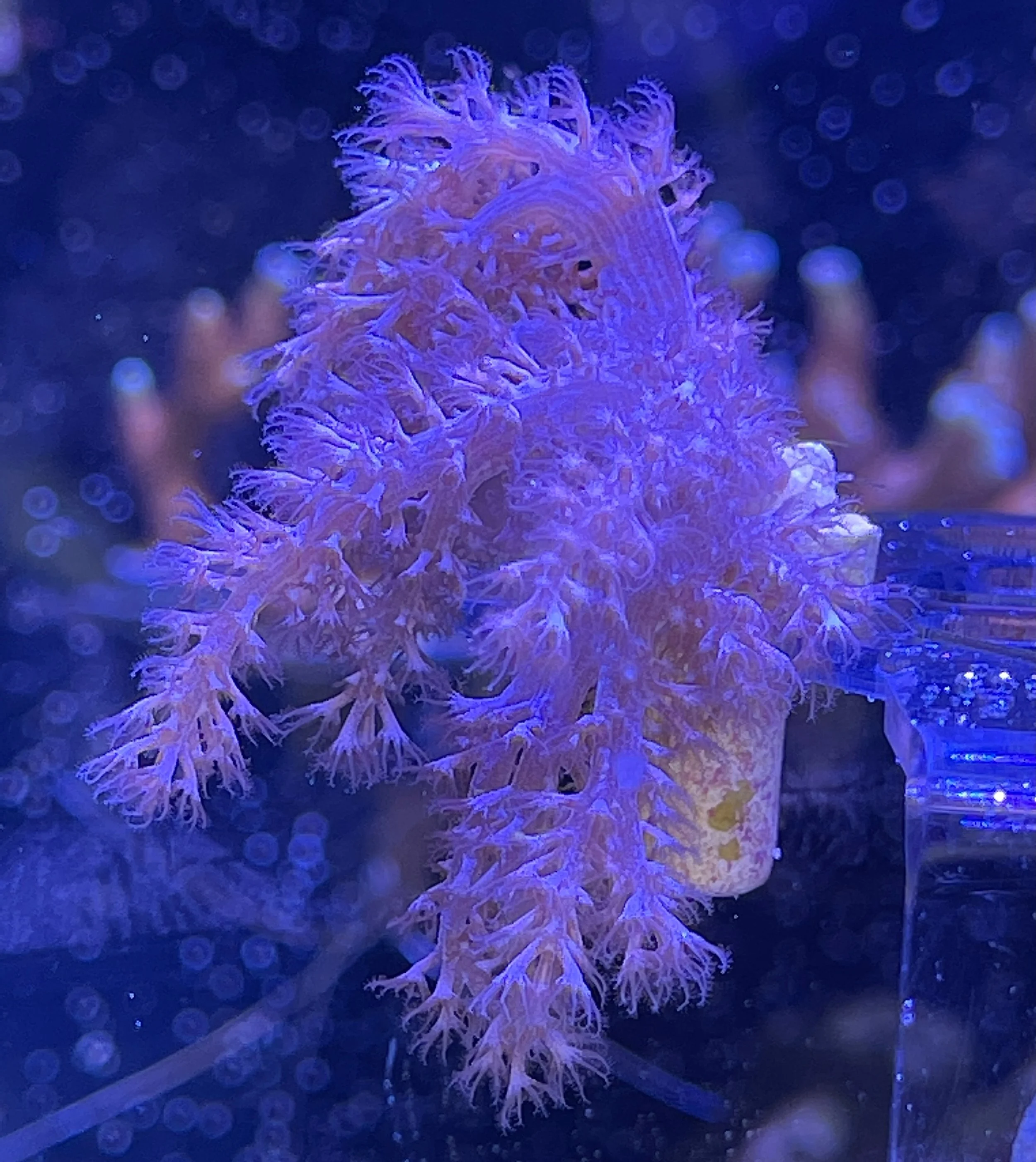Information
Soft corals, or non-reef building corals, are flexible organisms that do not grow limestone skeletons like hard corals. Instead, they are composed primarily of living tissue which allows them to be rather flexible. This gives soft corals a plant like appearance which still being an animal.
The spaghetti finger leather coral stands tall thanks to tiny calcareous components called sclerites. These sclerites are spiny skeletal elements embedded in the coral’s tissue that offer support. The surface of a leather coral is called the coenenchyme and is covered in tiny polyps, called autozooids and siphonozooids. Autozooid polyps function is to capture prey to feed the coral. The siphonozood polyps pump water into the body of the colony to supply oxygen.
Like other leather corals, the spaghetti finger leather coral will shrink smaller and shed its top layer to cleanse itself. This natural process of cleansing occurs at different times and rates depending on the water flow in the tank and other conditions. When the leather coral reopens, it will be larger and more beautiful than before.
Lighting
It requires medium to high lighting.
Water Flow
Medium to strong water movement.
Feeding
It obtains the majority of its nutrition from symbiotic algae zooxanthellae, but will benefit from additional food such as micro-plankton, baby brine shrimp, or foods designed for filter feeding invertebrates.
For continued good health, they will also require the addition of iodine, strontium, and other trace elements to the water.
Warning and Handling
It is a semi-aggressive soft coral and needs space between itself and other corals. This hardy fast growing coral is much easier to maintain in the home aquarium. Spaghetti Finger Leather Coral won't die from other corals, but the part that's touching will never look happy, as it's being irritated.
Most leathers are not aggresive enough to take out another coral, although Sinularia can be.




